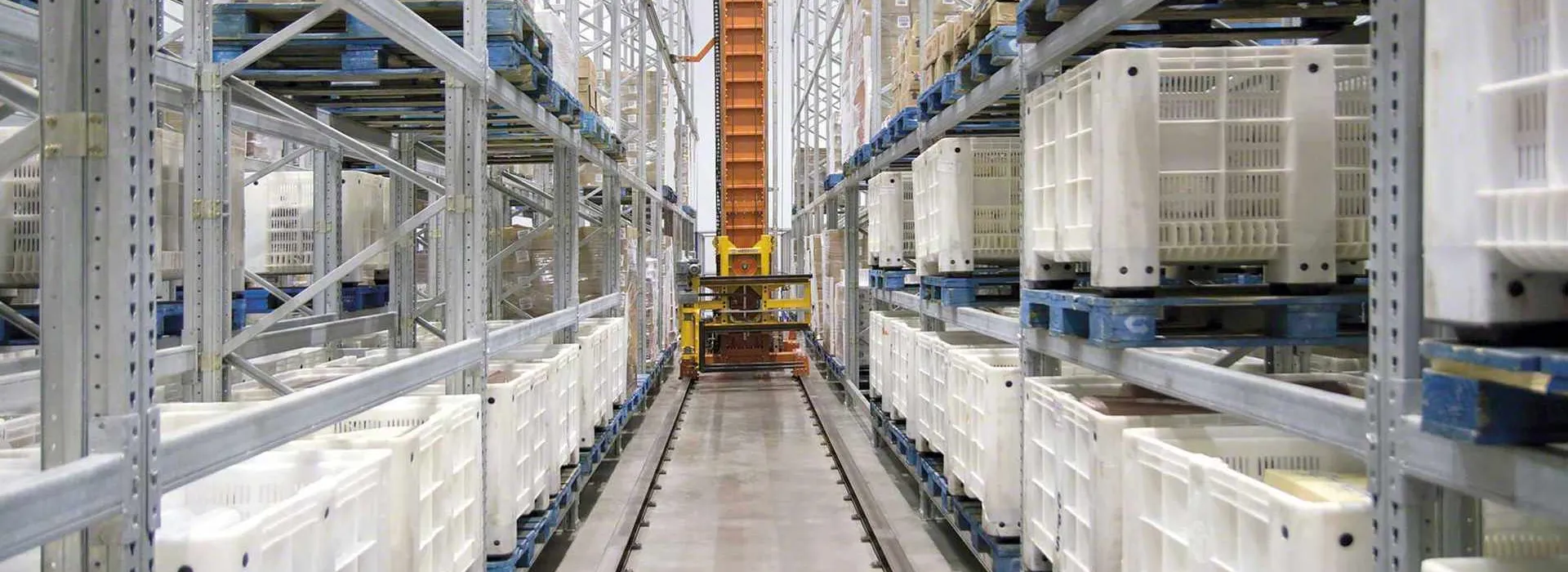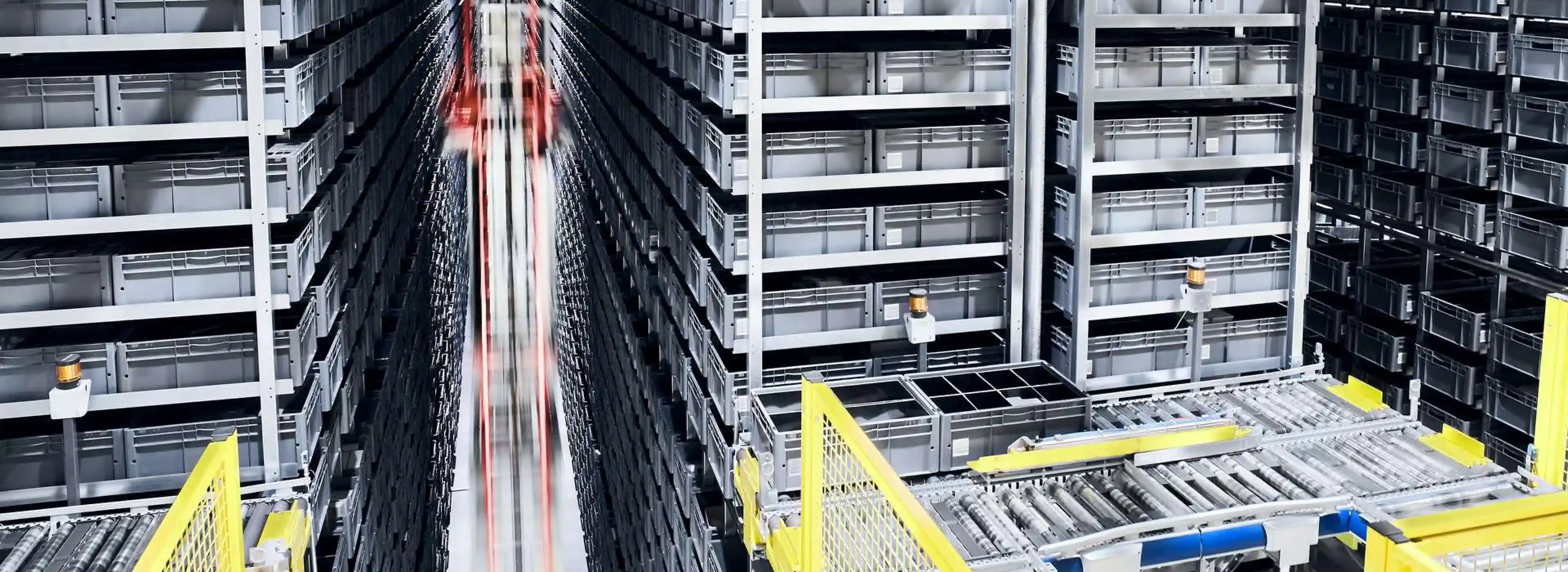Warehouse automation is a trending market because it is a critical driver of efficiency and productivity in the logistics and supply chain industry. Especially when customer expectations are at their highest, the adoption of warehouse automation is a cornerstone for success.
Click Here: Boost Your Warehouse Efficiency With This Advanced and Affordable WMS
In this blog post, we’ll delve into why warehouse automation is needed, the automation trends most likely to be adopted, and the challenges in adopting automation.
Why Warehouse Automation Tools are Trending
Warehouse automation tools are trending for several compelling reasons, driven by the evolving landscape of the global supply chain and the dynamic needs of modern businesses. Here are key factors contributing to the increasing popularity of warehouse automation tools:
1. Efficiency and Productivity Gains
Warehouse automation tools significantly enhance operational efficiency and productivity. Automation streamlines routine tasks such as order picking, packing, and sorting, allowing warehouses to handle larger volumes of goods in less time. This increased throughput translates to quicker order fulfillment, reduced lead times, and improved overall efficiency in warehouse operations.
2. Rising E-commerce Demands
The surge in e-commerce activity has placed unprecedented demands on warehouses to process and deliver orders swiftly. Automated systems, such as robotic picking and workflow automation, enable warehouses to meet the demands of the e-commerce boom by accelerating order processing and reducing the likelihood of errors, ultimately improving customer satisfaction.
3. Accuracy and Error Reduction
Automation minimizes the risk of human errors in tasks like inventory management and order fulfillment. Automated systems are precise and consistent, significantly reducing inaccuracies and the costs of order mistakes. This heightened accuracy not only improves customer satisfaction but also contributes to cost savings for businesses.

4. Labor Optimization and Scarce Workforce
The ongoing challenges in securing an adequate workforce, especially for manual and repetitive tasks, have prompted businesses to turn to automation. Robots and other automated technologies can handle repetitive and physically demanding tasks, allowing human workers to focus on more complex and strategic aspects of warehouse operations.
5. Competitive Advantage
Businesses are adopting warehouse automation tools to gain a competitive edge in the market. The ability to process orders quickly, accurately, and cost-effectively positions companies as leaders in their respective industries. Automation enables businesses to stay agile and responsive to market changes, making them more adaptable to evolving customer demands.
6. Cost Savings Over the Long Term
While larger initial costs may be associated with implementing warehouse automation, the long-term benefits often outweigh these upfront investments. Automation can lead to reduced labor costs, lower error rates, and optimized use of warehouse space, contributing to substantial cost savings over time.
In summary, the trend of warehouse automation tools is driven by the imperative for businesses to adapt to the demands of a rapidly changing market. The efficiency gains, cost savings, and enhanced capabilities provided by automation are compelling reasons for businesses to invest in these technologies and stay competitive in the evolving landscape of supply chain management.

5 Warehouse Automation Trends You Should Look Out For
As businesses seek to streamline operations and meet the demands of an ever-evolving market, the adoption of warehouse automation has become instrumental. In this section, we will explore six groundbreaking automation trends that are shaping the future of warehouse management.
1. AI (Artificial Intelligence)
Artificial Intelligence (AI) has emerged as a powerhouse in warehouse automation, revolutionizing decision-making processes. With AI-powered analytics, warehouses can enhance demand forecasting accuracy, optimize inventory management, and dynamically adjust routing for efficient order fulfillment. The ability of AI systems to learn and adapt in real time contributes to a more intelligent and responsive supply chain ecosystem.
2. Workflows
Workflow automation is a software that can help you systemize and enforce warehouse processes. From creating tasks to notifications and more, all without additional human intervention. It relies on rule-based logic to carry out routine tasks. Once the software is provided with clear rules, it can automatically perform a wide range of processes.
Warehouse workflow automation solutions can be used to streamline a broad range of tasks. Rather than weighing your team down with tedious busy work like sending emails and creating tasks, you can create automations that instantly execute these actions when a specific trigger condition is met.
You can also automate warehouse inventory management processes, such as updating cargo status when certain conditions are met. This will help you maintain an accurate inventory, keep customers updated in real-time, and trigger tasks to guarantee processes are followed and completed from beginning to end.
3. Cobots (Collaborative Robots)
Collaborative Robots, or cobots, are changing the game by working alongside human employees to enhance productivity. These robots are designed to collaborate with humans in tasks that require precision, speed, or repetitive actions. Cobots are fostering a harmonious blend of human skills and robotic efficiency, marking a paradigm shift in how warehouses approach workforce augmentation.
4. AGVs & AMRs (Automated Guided Vehicles & Autonomous Mobile Robots)
Automated Guided Vehicles (AGVs) and Autonomous Mobile Robots (AMRs) are at the forefront of material handling automation. AGVs follow predefined paths, while AMRs navigate autonomously, adapting to dynamic warehouse environments. These mobile robots are instrumental in automating tasks such as material transport, reducing reliance on manual labor, and increasing the agility of warehouse operations.
5. IoT (Internet of Things)
The Internet of Things (IoT) is interconnecting devices within the warehouse to create a network of real-time data. By integrating IoT sensors and devices, warehouses gain improved visibility into their operations. IoT facilitates real-time tracking of inventory, monitoring equipment health, and optimizing overall warehouse performance.
As warehouses embrace these automation trends, they are not only optimizing their current operations but also future-proofing their businesses. The synergy of AI, optimized workflows, collaborative robots, mobile automation, and IoT propels the logistics industry into a new era of efficiency, agility, and innovation. The warehouses of tomorrow are not just automated; they are intelligent, adaptive, and ready to meet the challenges of an increasingly complex and dynamic market.
Challenges in Adopting Warehouse Automation Trends
The promise of efficiency, accuracy, and innovation that comes with adopting warehouse automation trends is undeniable. However, like any transformative journey, the path to automation is not without its challenges. Let’s explore four key hurdles that businesses face when embracing warehouse automation trends and how they can strategically navigate through them.
1. Labor Concerns and the Role of Human Workers
One of the foremost challenges in warehouse automation lies in addressing the concerns surrounding the displacement of human workers. As automation takes over routine and manual tasks, there is a growing need to redefine the role of human workers within the warehouse.
Businesses should focus on upskilling their workforce rather than viewing automation as a replacement, enabling them to collaborate seamlessly with automated systems. By emphasizing the complementary nature of human and machine capabilities, companies can build a workforce that leverages both strengths.
2. Initial Costs and Return on Investment (ROI)
The upfront costs associated with implementing warehouse automation can be substantial, posing a significant barrier for many businesses. However, viewing automation as a strategic investment with long-term benefits is essential.
Organizations should conduct a thorough cost-benefit analysis to overcome this challenge, considering factors such as labor savings, error reduction, and increased operational efficiency. Understanding the potential return on investment (ROI) is crucial for making informed decisions about adopting automation technologies.
3. Integration Challenges with Existing Systems
Many warehouses operate with established systems and technologies that have been in place for years. Integrating new automation tools with existing systems can present a considerable challenge.
To overcome this hurdle, businesses should prioritize compatibility and invest in flexible automation solutions that seamlessly integrate with their current infrastructure. Collaboration with experienced vendors and consultants can streamline the integration process, ensuring a smooth transition without disrupting ongoing operations.
4. Cybersecurity in Automated Warehouses
The increasing reliance on connected devices and data exchange in automated warehouses brings forth a critical challenge – cybersecurity. With the interconnected nature of automation technologies, warehouses become susceptible to cyber threats.
To address this concern, businesses must implement robust cybersecurity measures. This includes securing communication channels, regularly updating software, and providing employee training on cybersecurity best practices. By prioritizing the protection of sensitive data and systems, warehouses can mitigate the risks associated with cyber threats.
In conclusion, while warehouse automation trends hold immense potential, acknowledging and proactively addressing these challenges is vital for a successful transition. By cultivating a workforce that embraces collaboration, carefully evaluating the ROI of automation, investing in integration-friendly solutions, and prioritizing cybersecurity, businesses can pave the way for a future where warehouse automation not only enhances efficiency but does so in a sustainable and secure manner.

Conclusion: The Future of Warehouse Automation Trends
In the ever-evolving landscape of logistics and supply chain management, the adoption of warehouse automation has become not just a trend but a strategic imperative for success. The driving forces behind this shift are evident: a quest for unparalleled efficiency, a response to rising e-commerce demands, an emphasis on accuracy and error reduction, the optimization of labor resources, and the pursuit of a competitive advantage in a dynamic market.
As warehouse automation continues to evolve, these trends represent significant opportunities for businesses seeking to stay competitive in the modern market. Overcoming challenges and embracing these trends strategically can lead to enhanced operational efficiency, reduced costs, and improved customer satisfaction. The future of warehouse management lies in the seamless integration of cutting-edge technologies, paving the way for smarter, more agile, and more efficient supply chain operations.
For more information about automating warehouse operations or the latest warehouse technology trends, you can follow us on LinkedIn, YouTube, X, or Facebook. If you have other inquiries or suggestions, please contact us here. We’ll be happy to hear from you.












